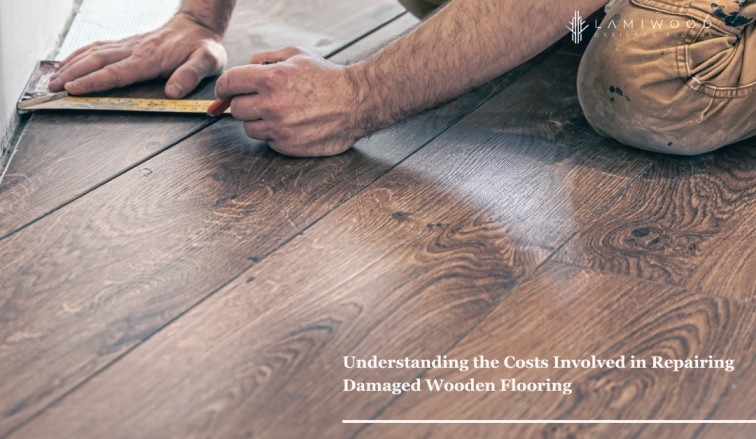Understanding the Costs Involved in Repairing Damaged Wooden Flooring

Wooden flooring adds warmth, character, and timeless appeal to any space. However, like any other aspect of your home, wooden floors are subject to wear and tear over time. Whether it's due to heavy foot traffic, water damage, scratches, or other factors, repairing damaged wooden flooring is an essential aspect of maintenance for homeowners. But how much does it cost to fix damaged wooden flooring? Let's delve into the factors that influence the cost and explore some effective solutions.
Assessment of Damage
The cost of repairing damaged wooden flooring depends primarily on the extent and type of damage. Minor issues such as small scratches or dents can often be addressed with simple DIY methods or inexpensive repair kits available in the market. However, significant damage like deep scratches, gouges, warped boards, or water damage may require professional intervention, which can significantly impact the overall cost.
Professional Repair Costs
When it comes to hiring professionals to repair damaged wooden flooring, several factors come into play. Firstly, the size of the damaged area plays a crucial role in determining the cost. Larger areas or widespread damage will naturally incur higher repair costs. Additionally, the type of wood flooring and its installation method can influence the price. Exotic or rare wood species may require specialized expertise, driving up the cost of repairs.
Type of Repair
The type of repair needed also affects the overall cost. For instance, repairing minor scratches or surface damage may involve sanding, filling, and refinishing, which could be relatively affordable. However, if the damage extends deeper into the wood, such as structural issues or water damage, more extensive repair work may be required, including board replacement or subfloor repair. These complex repairs typically involve higher labor costs and materials, thus increasing the overall expense.
Labor Costs
Labor costs constitute a significant portion of the overall expenses associated with repairing damaged engineered wood flooring. Professional flooring contractors typically charge for their time and expertise, which can vary depending on factors such as location, contractor reputation, and the complexity of the job. Additionally, if the repair work involves moving furniture, removing existing flooring, or preparing the subfloor, these additional services will incur extra charges.
Material Costs
The cost of materials required for repairing damaged wooden flooring can vary widely depending on factors such as the type of wood, finish, and whether any specialized tools or products are needed. For instance, replacing damaged boards may require purchasing matching wood species and finishes to ensure a seamless repair. Additionally, if the subfloor or underlayment needs repair or replacement, the cost of materials for these components must also be considered.
Additional Factors
In addition to the direct costs of repair materials and labor, homeowners should also factor in any additional expenses that may arise during the repair process. For example, if the damaged area is part of a larger room, blending the repaired section with the existing flooring seamlessly may require refinishing or re-staining the entire floor, which will incur extra costs. Moreover, unforeseen issues such as hidden damage or structural problems may arise during the repair process, necessitating further expenditures.
Preventive Measures
While repairing damaged wooden flooring is inevitable, taking preventive measures can help minimize the frequency and extent of repairs, ultimately reducing long-term costs. Simple practices such as placing mats or rugs in high-traffic areas, promptly cleaning up spills, and using furniture pads to prevent scratches can help preserve the integrity of your wooden floors and extend their lifespan.
Hence, the cost of repairing damaged wooden flooring can vary depending on factors such as the extent of damage, type of repair needed, labor costs, and materials required. While minor scratches or surface damage may be addressed affordably with DIY methods or simple repairs, more extensive damage may necessitate professional intervention, resulting in higher expenses. By understanding the factors influencing repair costs and taking preventive measures, homeowners can effectively manage the upkeep of their wooden flooring while minimizing expenses in the long run.
- Industry
- Art
- Causes
- Crafts
- Dance
- Drinks
- Film
- Fitness
- Food
- Games
- Gardening
- Health
- Home
- Literature
- Music
- Networking
- Other
- Party
- Religion
- Shopping
- Sports
- Theater
- Wellness
- News


